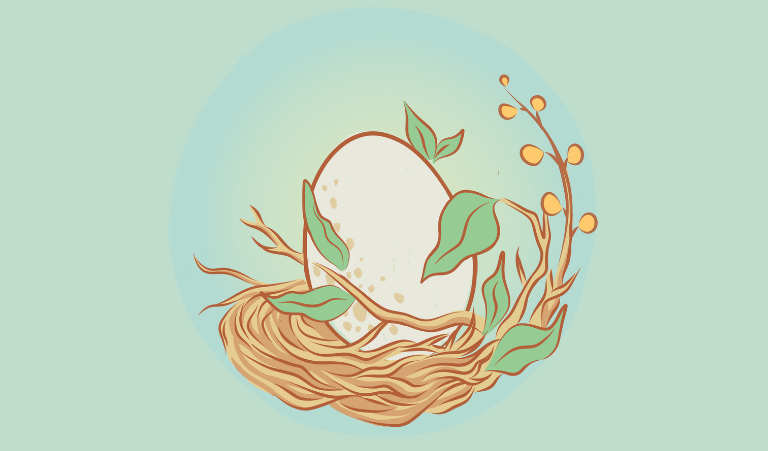Dear friends,
Our colleagues who are translating some of Thich Nhat Hanh’s teachings from Vietnamese to English have discovered several interesting insights. We’d like to share these details and nuances to allow better understanding and application of Thay’s teachings. 🙏🏽
In Sanskrit, the word ‘citta’ means ‘heart’ and ‘mind’. When we speak about the mind of love, i.e. bodhicitta, we also speak of the heart of love.
In a talk Thay gave on The Net of Sensual Love Sutra, in Vietnamese, he nevertheless used the English term “the mind of enlightenment” to define bodhicitta. (You can watch this excerpt video on the Plum Village App, with English subtitles) Thay explained that this is the pivotal moment in our life when it dawns on us very viscerally, as a gut feeling, that we’ve been in pain long enough and want to do something about it.
The Vietnamese word ‘tâm’ also means ‘heart’ and ‘mind’. In Buddhism, we have a teaching on the four elements of true love called Tứ Vô Lượng Tâm, or The Four Immeasurables, which speaks of the four kinds of immeasurable heart and mind: loving-kindness, compassion, joy, and equanimity.
📍 Watch Thay’s teaching about the Four Elements of True Love on the Plum Village App.
Something minor but interesting about ‘tâm’ is that it’s synonymous – and often used interchangeably – with ‘lòng’, which also means ‘heart’ and ‘mind’. However, the literal meaning of ‘lòng’ is ‘gut’.
Therefore, in Vietnamese, when you speak of someone’s heart and mind, you may speak of the volume of their gut without even realizing.
Vietnamese people often describe someone with a big heart and an open mind using the phrase ‘tấm lòng rộng lượng’, literally meaning ‘a gut with spacious volume’. Someone who has a small heart or who is being narrow-minded or selfish is said to have ‘lòng dạ hẹp hòi’: literally, a ‘narrow gut and belly’.
So in a way, ‘tâm’ (and its synonym ‘lòng’) means the heart, the mind, and the gut. It’s a term that represents all of a person’s visceral thoughts, feelings, motivation, and disposition in life.

In the Plum Village practice tradition, ‘lòng’ appears in the first line of the gatha ‘Inviting the Bell’: “Lắng lòng nghe, lắng lòng nghe” (“Listen, listen”).
‘Lắng’, as a verb, means ‘to still’. ‘Nghe’, another verb, means ‘to listen’. ‘Lắng lòng nghe’, then, means, ‘Still the mind, the heart and the gut, and listen.’ When listening to the sounds of the bell, not only do we stop the inner chattering in the mind and calm the strong emotions we have in our heart, we also learn to arrive in the gut, i.e. the body.
By being repeated, ‘Lắng lòng nghe’ becomes a profound reminder from Thay to us. It tells us that, in order to truly listen – to what’s being said and what’s being left unsaid, with clarity, courage, and compassion – we should first have the element of stillness, or stopping, in the whole of our being: in the mind, the heart, and the body.
Thay often said that it isn’t necessary to learn a lot of theories and sutras to be a successful practitioner. The most important thing is that we know how to relax, rest, and arrive in the gut, the abdomen, and the body.
In the exercise Listening to Our Gut Brain, Sister D (Sister Dang Nghiem) stated that:
Every single practice that we offer, from mindful breathing and sitting meditation to mindful walking, mindful eating, mindful working, mindful speaking and listening, to deep relaxation, is to train our mind to stop running away to the past or to the future. In other words, we stop the runaway horse of our unconscious, habitual actions.
📍 Read more on the interconnectedness between the gut and the mind (especially when it’s under stress).
The unity and oneness of the mind, the heart, and the gut – in other words, the unity and oneness of the mind, the heart, and the body – brings about great healing.
“Our body is a manifestation of our mind. If there’s sadness and pain in the mind, then it will manifest and remain in the body. The mind may be invisible and abstract, but with regard to the body, we can see, hear, smell, taste, touch, and perceive it. Therefore, we learn to befriend and relax each part of our body. […] When the body can be relaxed and at ease, the mind naturally becomes lighter and more peaceful, providing optimal conditions for our healing.” – Sister Dang Nghiem
We invite you to practice bringing harmony to the mind, the heart, and the body through Sister Dang Nghiem’s Guided Deep Relaxation.
References
- Thich Nhat Hanh, 2020, Four Elements of True Love https://youtu.be/PKWIeQXCKvU
- Thich Nhat Hanh, 2010, The Enlightened Person, The Warrior, & The Artist In Us: Stanza 29 of The Net of Sensual Love Sutra, to be published on Thich Nhat Hanh’s Talks YouTube channel on March 30, 2024 at https://youtu.be/_OVMv5rVkRI
- Kaira Jewel Lingo, 2022, ‘The Mind-Heart of the Buddha’ https://www.lionsroar.com/the-mind-heart-of-the-buddha/
- Wikipedia, n.d., ‘Chitta (Buddhism)’ https://en.wikipedia.org/wiki/Chitta_(Buddhism)
- Jack Kornfield, 2014, ‘The Mind and the Heart’ https://jackkornfield.com/mind-heart/
- Brigham Young University’s Counseling and Psychological Services, n.d., ‘Stress and the Digestive System’ https://caps.byu.edu/stress-and-the-digestive-system
☁️ As has been the case with Buddhist teachings for millennia, there is no charge for the Plum Village App and its digital content. However, if your means allow, please consider offering a donation to support our small team’s continued work on the app.

So interesting!
🙏
Thank you!
Thank you for reading, dear Nora! With gratitude 🙏
Thank you for the reminder. You wrote this in a way that beautifully communicated the insights. I’ve been running and need to go back to myself. 🙏
Thank you, dear Susan, for the kind words. We are happy to hear this has been a useful read for you. With gratitude 🙏